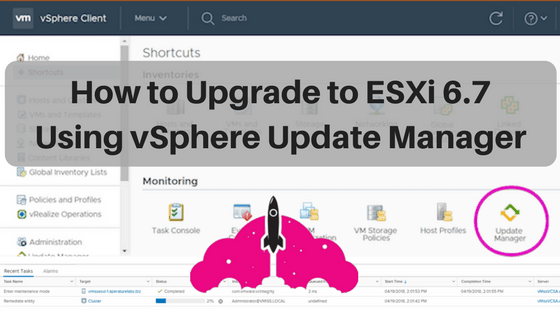

- #VSPHERE 6.5 UPDATE MANAGER BEST PRACTICES INSTALL#
- #VSPHERE 6.5 UPDATE MANAGER BEST PRACTICES PASSWORD#
Configure remote logging for your ESXi hosts so you have a centralized store of ESXi logs for a long-term audit record. That way, you can choose whether to enable the direct console user interface (DCUI) and whether users can log in directly to the host or only via the vCenter Server. Enable lockdown mode on all ESXi hosts. Configure all ESXi hosts to synchronize time with the central NTP servers. Add each ESXi host to the Microsoft Active Directory domain, so you can use AD accounts to log in and manage each host’s settings. To secure your ESXi hypervisor, implement the following best practices: 
Do not allow users to log directly into the vCenter server host machine.Make sure that the time source is configured to sync with a time server or a time server pool, in order to ensure proper certificate validation.
#VSPHERE 6.5 UPDATE MANAGER BEST PRACTICES INSTALL#
Install an antivirus solution and keep it up to date. Make sure that the operating system is up to date on security patches. If you are running vCenter Server on Windows, make sure the remote desktop host configuration settings ensure the highest level of encryption. Change this setting if necessary to comply with your security policy. #VSPHERE 6.5 UPDATE MANAGER BEST PRACTICES PASSWORD#
By default, the password for the vpxuser account expires after 30 days. Each IP address must have a valid internal DNS registration, including reverse name resolution. To help keep VMware secure, make sure your vCenter Server systems use static IP addresses and host names. Whether you install it on a Windows or Linux operating system, the following best practices can help you maintain it in a secure state: 
VMware vCenter server is the main control center of your vSphere environment.







 0 kommentar(er)
0 kommentar(er)
